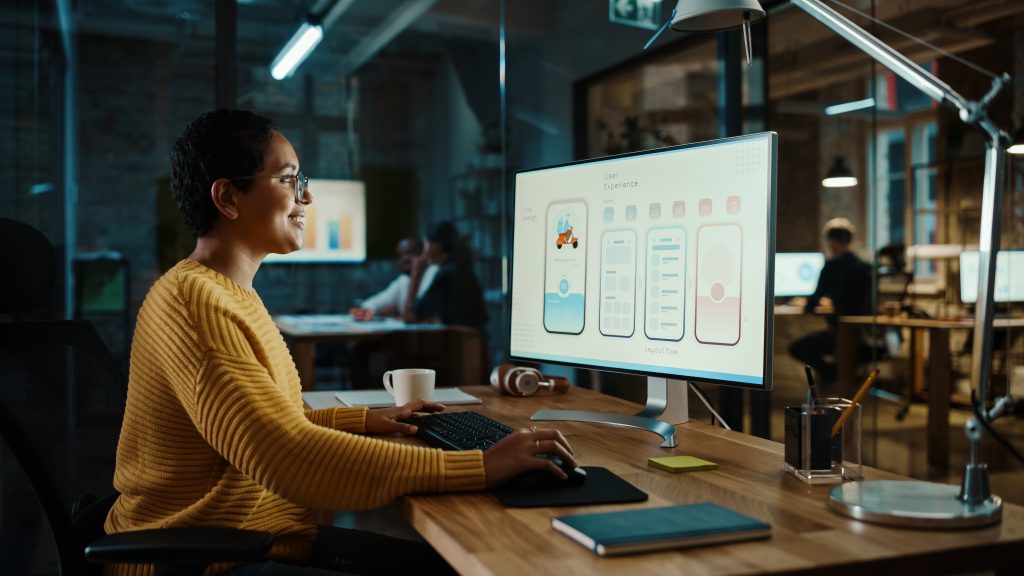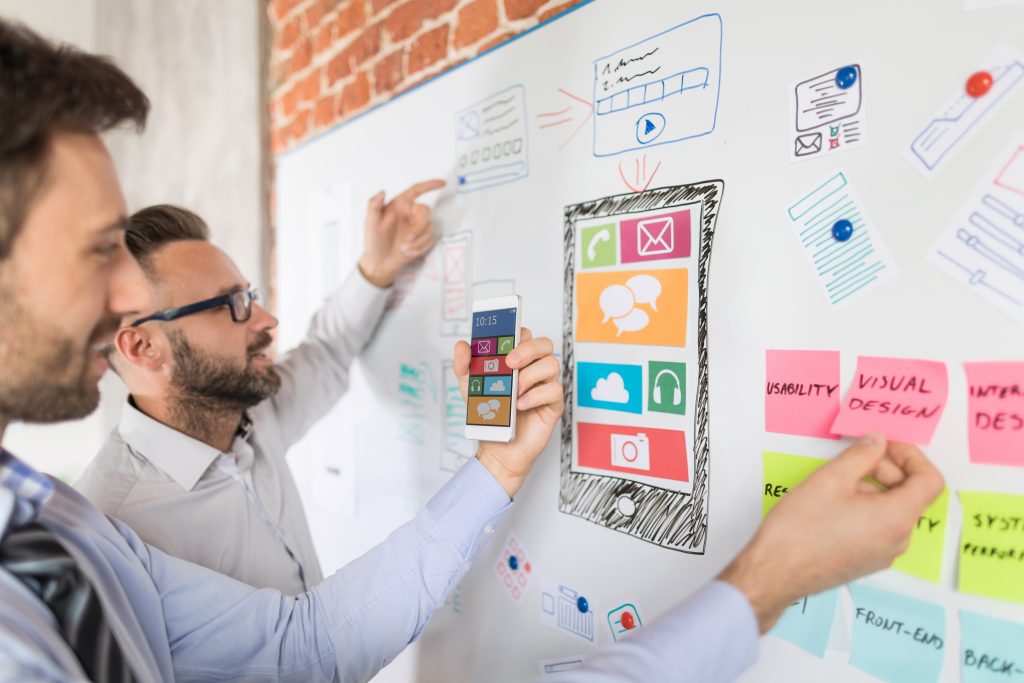A high-quality digital product agency doesn’t shoot for perfection the first time around. The design and development team understands the iterative nature of innovation for Web, Android and iOS Development.
Despite a famously troubled life, Dutch painter Vincent van Gogh created enduring work that continues to entertain and enthrall viewers more than a century after his death.
But those famous works weren’t one-off displays of brilliance. He made rough and ready sketches, and then he worked and reworked them until he eventually created something for the ages.
“Great things,” he once said, “are done by a series of small things brought together.”
There is no one-to-one comparison between painting an enduring masterpiece and digital product design for startups. Maybe a website or mobile app could be considered art, but don’t expect them to inspire lines to form outside of galleries in a hundred years.
However, his approach of doing “a series of small things” to achieve something big is open to anyone who tries to bring something into the world that didn’t exist before.
Rather than creating sketches that become a painting, specialized tech workers create a digital prototype that eventually becomes a mobile app or website that any startup executive would be proud to offer their customers.
Digital prototyping is a process. Designers and developers use low-fidelity wireframing or rough illustrations to quickly build a presentation of a project or idea. The key ingredient of a digital prototype is interactivity. Users can click buttons and links that show how the final product will work.
It’s an early iteration, a rough idea that can be shaped and polished over time. As with a sketch and a painting, the prototype’s role is to suggest what the final product can be.
In the agile process methodology, prototypes allow tech-savvy workers to compare and contrast. The team can play around with ideas and switch things up.
A company experienced with Web, Android and iOS Development on the client’s suggestions from start to finish. The team takes those ideas and works quickly to complete one or more digital prototypes. As more input is gathered from the client at each stage of development, the digital team is able to deliver a mobile app or website that’s truly built to order.
It’s part of an agile process and a collaborative one. Unless the client is a museum or a gallery, the final product probably won’t inspire viewers a century from now.
But by working together and taking each small step along the way, a digital product agency and its client can create something fresh and easy-to-use for customers.
Planning Your Prototype

If you’re still reading, you’re seeing how digital prototyping can be part of a successful creative process.
So, how would a client proceed? Van Gogh’s paintings and your business started with ideas, and a mobile app or website begins the same way.
Think about what you want the end product to do. Play with the idea for a while. Now is not a time to rush to judgment. What if it did this? What if it did that?
And you don’t have to be limited to one idea. Generate as many ideas as you can. Which one seems to hold the most promise?
The business world and art world probably aren’t as far apart as most people assume. In business and art, there’s something to be said about how an idea feels.
Let’s say you’ve got a winner, or at least, you’ve got what you think is a winner. The next step is to do some poking and prodding:
- What does your user need?
- What’s your target audience?
- How large is the customer base?
- What are your competitors doing?
- What products would be in competition with yours?
For the next step, you and an experienced company that does Web, Android and iOS Development sketch out an initial prototype and go digital. One way of knowing you hired the right team is if they also poke and prod your idea with an eye toward making it stronger.
Now’s the time when a fast and rough digital prototype comes into serious play by putting it in front of investors.
Knowledgeable investors are impressed by the functionality of a mobile app or website. They realized it will be polished and expanded later. They want to know that you have a workable idea with solid potential.
Next, it’s back to the design and development team. During digital product design for startups, everything must be tested and validated.
It’s not a bad thing for parts of a product to fail during this stage. According to agile methodology, the sooner something fails, the quicker it can be replaced with something better.
The rest of the process is about reviewing and revising followed by more reviewing and revising. In the early stages, big strides can be made quickly, but as the project matures, you’re looking for smaller and smaller refinements.
It might seem like a lot of work, and it is, but it doesn’t go on forever. Intuitio Labs, an Atlanta-based tech firm with global reach, follows these steps to produce affordable products for clients in six to 12 weeks.
The company believes in product velocity because that’s what clients need. Extra features can be added at a later date. The important thing is to get the product to market so it can:
- Engage with customers.
- Start making money.
Effective digital product design for startups is about serving a client’s initial needs so well that they can’t help but come back later to expand the product to serve a growing customer base.
Product Roadmapping for Digital Product Design for Startups

Van Gogh wandered the countryside to find sights and scenes that inspired him to create. Maybe this is where art and business diverge because, when deadlines need to be met, there’s no time for wandering the real or metaphorical countryside.
If it’s going to take several weeks or months to build a digital product, a roadmap can both point the way and keep the project on track.
When it comes to digital product design for startups, the product manager will present a roadmap with:
- a plan to build the product
- the product budget
- the development strategy
The roadmap can be strict or flexible. The waterfall product roadmap commits to building specific features by a deadline. An agile roadmap has built-in flexibility that’s meant to be adjusted as the product develops.
The development of a digital prototype fits nicely into the agile roadmap because it’s an invitation to experiment with different features to see what provides the most value for the client.
Whatever roadmap your team uses, it’s a way to illustrate how short-term steps apply to your long-term goal. It’s about
- vision
- direction
- priorities
- progress
It’s also about doing the many small things that make great things possible, which brings us back to Van Gogh.
“Do not quench your inspiration and your imagination,” Van Gogh said. “Do not become the slave of your model.”
Of course, he wasn’t talking about a digital prototype in the 19th century, but it’s clear he understood the iterative nature of innovation.
When Intuitio Labs’ team of designers and developers are working away on a project for a client, they’re engaged in an agile process of trying things and testing them again and again. Each day is about following the roadmap and taking another step toward the client’s goals.
The final result will never hang on a museum wall, but it still can be quite inspiring, and because we’re talking about business and not art, it also can be profitable.
To learn more about Intuitio Labs’ approach to digital prototyping, visit www.intuitiolabs.com.

